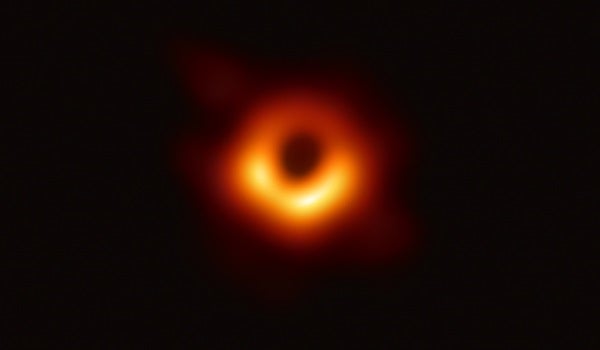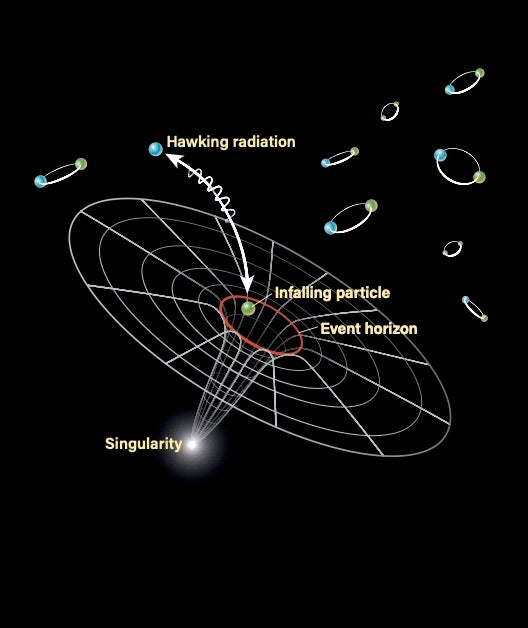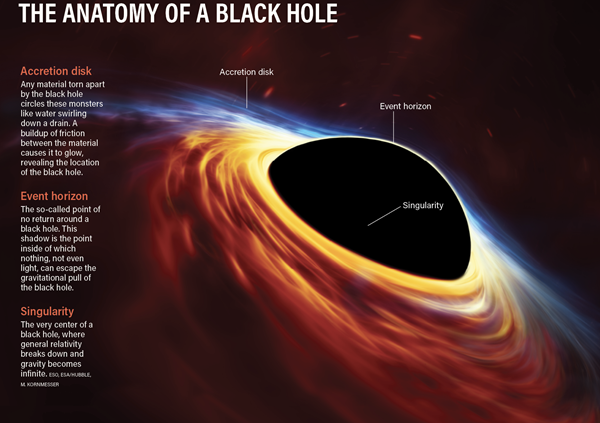Key Takeaways:
- Black holes, from stellar-mass to supermassive, will eventually be the last cosmic entities left in the universe.
- They survive by consuming matter and radiate energy through Hawking radiation, causing them to shrink and eventually explode.
- Hawking radiation, a result of quantum mechanics, allows particles to escape from a black hole.
- The process of black hole evaporation is extremely slow, with supermassive black holes taking a googol years to vanish.
- When a black hole reaches the end of its life, it will emit a spectacular flash of light and energy.

In the distant future, long after the final stars have faded, black holes will take center stage in a spectacular cosmic finale. These enigmatic regions of space-time, where gravity’s grip is so powerful that not even light can escape, are poised to be the last inhabitants of the universe.
From relatively small stellar-mass black holes to the gargantuan supermassive ones lurking at the hearts of galaxies, these celestial behemoths will eventually meet their own dramatic end.
In the current Stelliferous Era, stars and galaxies continue to be born, but as the universe’s resources are depleted, the stars will gradually fade away, leaving black holes as the universe’s sole occupants. However, even these cosmic monstrosities won’t fade quietly into the night. They will conclude their existence with a burst of radiant fireworks, marking the conclusion of an era.
Black holes sustain themselves by consuming matter, forming accretion disks of material that they’ve torn apart and devoured. As this material draws closer to the black hole, it accelerates, generating heat through friction. This process causes the accretion disk to glow and outlines the shadow of the black hole, known as the event horizon.
The event horizon is a crucial element in a black hole’s life and death. Material that crosses this boundary is lost forever, adhering to the laws of gravity as we understand them.
However, when quantum mechanics is considered, this point of no return is not quite as inviolable. In 1974, Stephen Hawking proposed that, from a quantum perspective, particles can escape from a black hole, although the process is extremely slow.

Quantum mechanics tells us that empty space is not devoid of energy; it fluctuates over time. These fluctuations manifest as particle-antiparticle pairs that spontaneously appear and disappear throughout the universe.
When these particle pairs emerge near a black hole’s event horizon, it is possible for a particle with positive energy to escape while its partner with negative energy falls into the black hole. As a result, the black hole appears to radiate a particle away, decreasing its mass and causing it to shrink.
However, the demise of a black hole is far from immediate. The process of shedding all its mass as energy through Hawking radiation would take a staggering 10^100 years, known as a googol. This duration far surpasses the age of the universe, effectively rendering it eternal in human terms.

The lifespan of an individual black hole is strongly influenced by its mass. Larger black holes take significantly longer to evaporate. They can “cheat death” by growing, with their accretion of stars and gas continually adding time to their existence. However, as the universe ages, the material available for consumption will eventually run out, and the black hole’s countdown to doom will commence.
As a black hole undergoes its gradual evaporation, it shrinks, and the rate at which particles escape increases. In the final tenth of a second of its existence, a black hole will emit a tremendous burst of light and energy, resembling a million nuclear fusion bombs detonating within a minuscule region of space.
Despite being a formidable release of energy by human standards, this event is modest in astronomical terms, paling in comparison to the most powerful supernova ever observed.
Regardless of their size, all black holes culminate in this extraordinary display, differing only in the duration it takes them to reach their explosive end. Once a black hole has consumed its last morsel of matter, it inexorably approaches the moment when there’s nothing left but the inexorable descent of cosmic sand grains.


